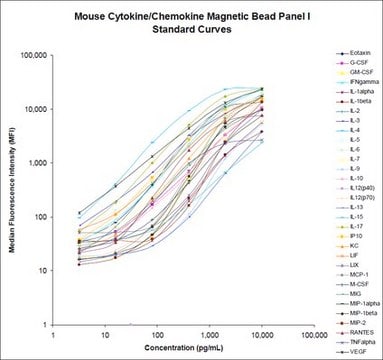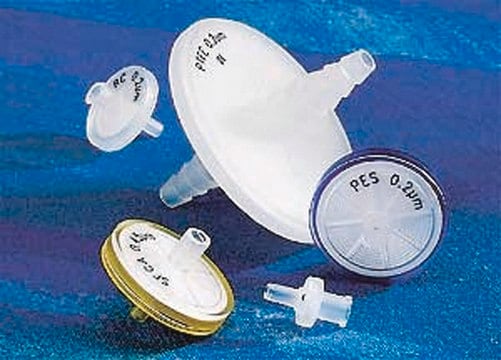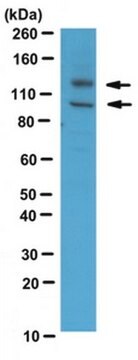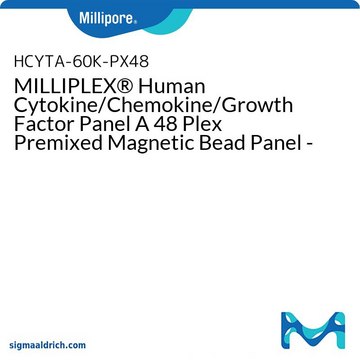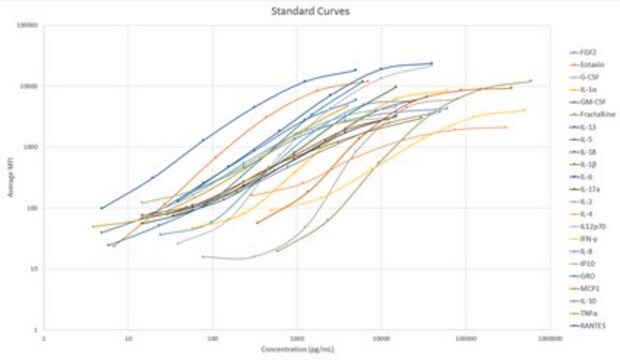AB19026
Anti-ADAM 10 Antibody, CT
Chemicon®, from rabbit
Synonym(s):
A disintegrin and metalloproteinase domain 10, ADAM metallopeptidase domain 10, CD156c antigen, Kuzbanian protein homolog, Mammalian disintegrin-metalloprotease, a disintegrin and metalloprotease domain 10
About This Item
Recommended Products
biological source
rabbit
Quality Level
antibody form
purified antibody
antibody product type
primary antibodies
clone
polyclonal
species reactivity
bovine, mouse, human
species reactivity (predicted by homology)
rat
manufacturer/tradename
Chemicon®
technique(s)
immunofluorescence: suitable
immunohistochemistry: suitable (paraffin)
western blot: suitable
NCBI accession no.
UniProt accession no.
shipped in
wet ice
target post-translational modification
unmodified
Gene Information
rat ... Adam10(29650)
General description
Tumor-necrosis factor alpha is a proinflammatory cytokine and contributes to a variety of inflammatory disease responses and programmed cell death. Notch receptor and its ligand participate in cell fate decisions during vertebrate development and are associated with several human disorders, including a T-cell lymphoma. TNA-alpha, notch and its ligand delta are all membrane-bond molecules, which are cleaved by proteases to release mature proteins or functional receptor. ADAM10-, a metalloprotease-disintegrin in the family of mammalian ADAM (for a disintegrin and metalloproteinase domain), was recently identified to cleave TNF-alpha, notch and its ligand delta (1-3). The genes encoding human, mouse, and bovine ADAM10 were recently cloned and designated ADAM10, kuzbanian (KUZ), and MADM, respectively, (1,2,4). ADAM10mRNA is expressed in a variety of human and bovine tissues.
Specificity
Immunogen
Application
1:500 - 1:2,000 dilution. Jurkat whole cell lysate can be used as a positive control and an 85 kDa band can be detected which may represent precursor. A 60 kDa faint band was detected in some cell lines including Jurkat, which appears to be the processed mature protein. Overloading of the primary antibody can lead to multiple bands appearing in some preparations. The presence of glycosylated forms and breakdown products can lead to other bands. A prominent proform at near 80-85 is usually seen, with bands at 60, and below 50 kDa in most cases. The immunogen peptide is available (Cat. No. AG533) for performing antibody blocking studies.
Optimal working dilutions must be determined by end user.
Immunohistochemistry:
A previous lot of this antibody was used to detect ADAM10 in formalin-fixed, paraffin-embedded renal tissue and renal cell carcinoma tissue (Gutwein, P., et al. EUROPEAN JOURNAL OF CANCER. 45(2009):478–489).
Immunofluorescence:
A previous lot of this antibody was used to detect ADAM10 in RCC4 (renal cell carcinoma) and A498 cells (Gutwein, P., et al. EUROPEAN JOURNAL OF CANCER. 45(2009):478–489).
Quality
Western Blot: 1:500 dilution of this lot detected ADAM 10 on 10 μg of RAW264.7 lysates
Target description
Linkage
Physical form
Storage and Stability
Handling Recommendations:
Upon receipt, and prior to removing the cap, centrifuge the vial and gently mix the solution. Aliquot into microcentrifuge tubes and store at -20°C. Avoid repeated freeze/thaw cycles, which may damage IgG and affect product performance.
Analysis Note
ADAM 10 is ubiquitously expressed. MDA-MB231 (Human breast cancer cell line known to express high levels of ADAM 10).
Other Notes
Legal Information
Not finding the right product?
Try our Product Selector Tool.
recommended
Storage Class Code
12 - Non Combustible Liquids
WGK
WGK 2
Flash Point(F)
Not applicable
Flash Point(C)
Not applicable
Certificates of Analysis (COA)
Search for Certificates of Analysis (COA) by entering the products Lot/Batch Number. Lot and Batch Numbers can be found on a product’s label following the words ‘Lot’ or ‘Batch’.
Already Own This Product?
Find documentation for the products that you have recently purchased in the Document Library.
Our team of scientists has experience in all areas of research including Life Science, Material Science, Chemical Synthesis, Chromatography, Analytical and many others.
Contact Technical Service


